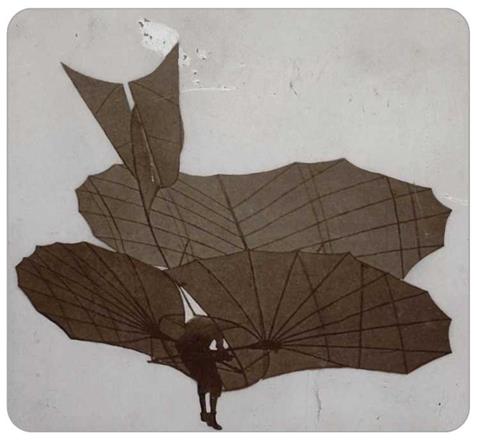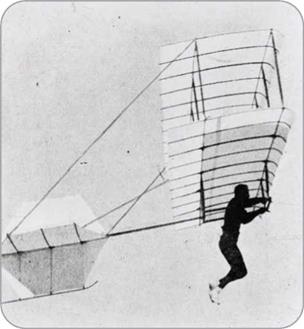Glider
A glider is an airplane that flies without an engine. Sailplane is another name for a glider and it is often applied to lightweight gliders designed especially for soaring. A few glider models have a motor and a retractable propeller. Generally, gliders need the assistance of a tow airplane or a winch to get them into the air.
Gliders are flown for recreation and for sports competitions. Gliding is a very popular way to start flying because the aircraft are cheaper and simpler than powered airplanes. Gliding also offers the pilot the exhilarating experience of soaring high in the sky like a bird.
Aviation Pioneers
The earliest known airplane model is a 2,300-year-old wooden carving from ancient Egypt. Some experts think it is a model glider, while others believe it to be a carving of a bird. It is thought that gliders may have been built in China more than 2,400 years ago. Some of the earliest pioneering experiments in aviation were made with gliders. These devices were often little more than birdlike wings strapped to the arms of a hopeful but unsuccessful aviator.
 |
 |
The first person to prove that a glider could carry a person was British inventor Sir George Cayley (1773-1857). He built his first glider in 1809. In 1849 Cayley built a glider that carried a
TECHibTALK
THE GIANT
The largest glider ever built was the German Messerschmitt Me-321. Known as the "Giant," it first flew in 1941 during World War II. It was 92 feet (28 meters) long, had a wingspan of 180 feet (55 meters), and weighed 38 tons (34 metric tons) when fully loaded. This enormous glider was intended to carry tanks, guns, and troops for the German invasion of Great Britain—an invasion planned for 1940 that never took place.
The monstrous Giant was so heavy that towing it for launch proved difficult, and its designers eventually gave it six engines. With a top speed of only 149 miles per hour (240 kilometers per hour), the Giant proved an easy prey for Allied fighters. No more Giants were built after April 1944.
ч__________________ /
ten-year-old boy a short distance down a hillside in Yorkshire, England. In 1853, Sir George persuaded his reluctant coachman to take a flight in another glider he had constructed.
Pioneers in the late nineteenth century experimented with kitelike gliders. The German inventor Otto Lilienthal made more than 2,000 successful glider flights before he was killed when one of his gliders crashed in 1896. The Wright brothers, Orville and Wilbur, built their first glider in 1900. Their third glider
|
О The American engineer Octave Chanute (1832-1910) built many successful gliders and encouraged other work in aviation, including that of the Wright brothers. This photograph shows his 1896 glider. |
flew many times in August and September 1902 and was the prototype for the historic Flyer of 1903.











